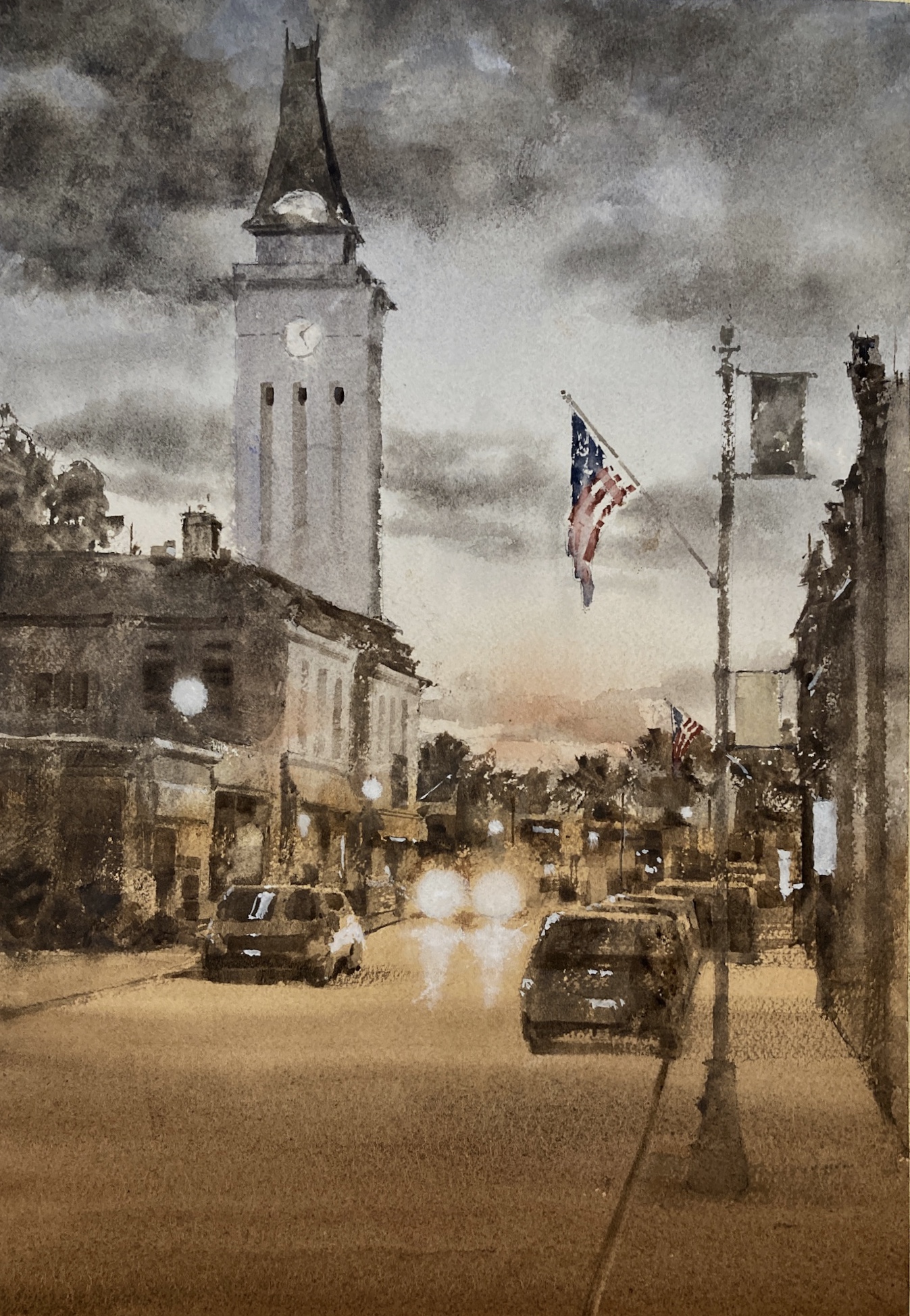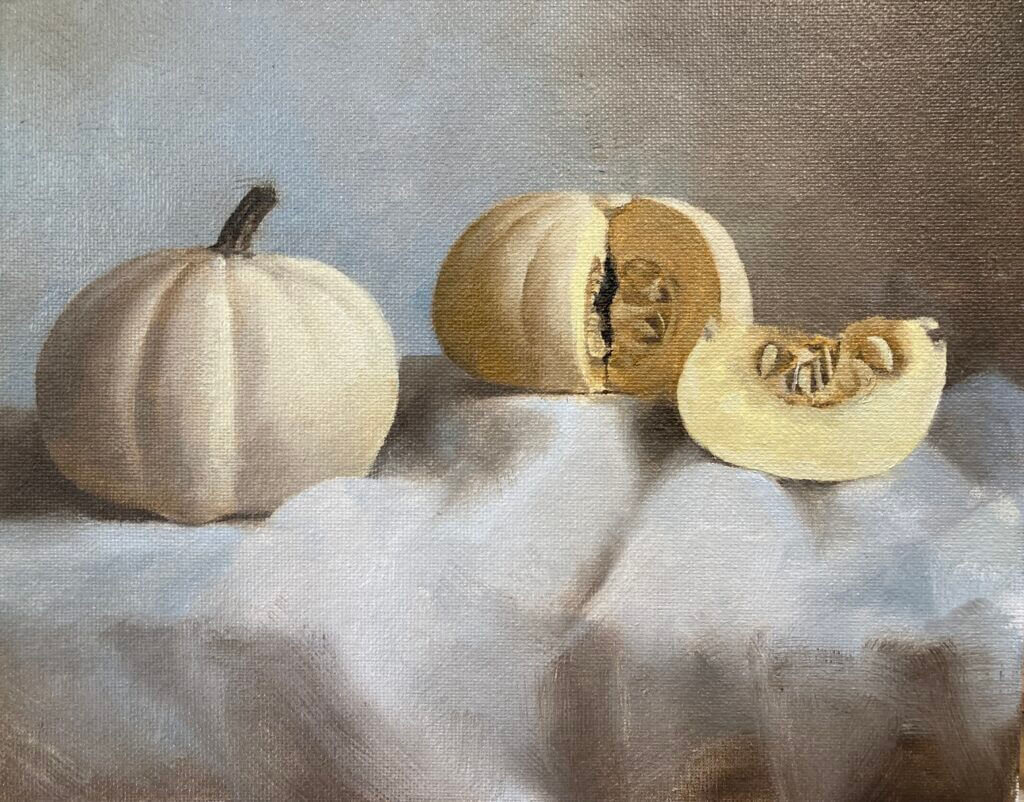I really like painting a watercolor cityscape. Great shapes, lots of things going on, and I get to interpret my everyday surroundings.
However this was a huge saga. I’m just going to leave this one here for now but the struggle to get to this point was filled with disaster and frustration. But I got there in the end and I’m very happy.
Watercolor Cityscape Reference Photos Need a Lot of Editing
One of the problems was that the reference photo had a lot of problems. The color scheme was a little odd and there was a lot of extraneous detail that had to be edited out. I also had the problem of the time of day. I originally wanted to do a night painting but I couldn’t get the atmosphere right. So I turned it into more of a dusk painting, lightening up the sky and adding in some more clouds.
Don’t Change Materials When You’re Trying Something New
In hindsight one of my problems was that I changed to use Arches watercolor paper rather than my trusty Fabriano Artistico. I knew that this one was going to be a struggle and could have done without having to readjust back to Arches.
Not Every Painting Works Out First Time
I did several versions of this painting. In fact I almost gave up after the first two. But in this case perseverance paid off and the final thing came together very well.
Lessons Learned for Watercolor Cityscape
I think I need some bullets here.
- Simplify! There’s a lot going on in a city street and you can’t put it all in.
- Work out your big value shapes ahead of time. If they don’t work the whole painting won’t hang together.
- Decide on a color scheme and don’t just blindly follow the photo. The original colors are nothing like how it ended up but it’s definitely a better painting for it.
- Suggest that detail and don’t put in every little thing. Sometimes just some dabs and a little contrast here and there can portray a multitude of things
- Subtle values changes in a larger value shape add a great deal of depth to a painting. This is starting to become one of my things. If I manage to achieve it in a painting I always think it’s better for it.
- If it doesn’t work first time think about it first. Do some value studies, reexamine the color scheme. Don’t just blindly try another one – that almost never works for me.
Finally…

Online Zoom Classes
I run online zoom courses regularly for both beginners and more advanced students. Please check out my workshop page.





